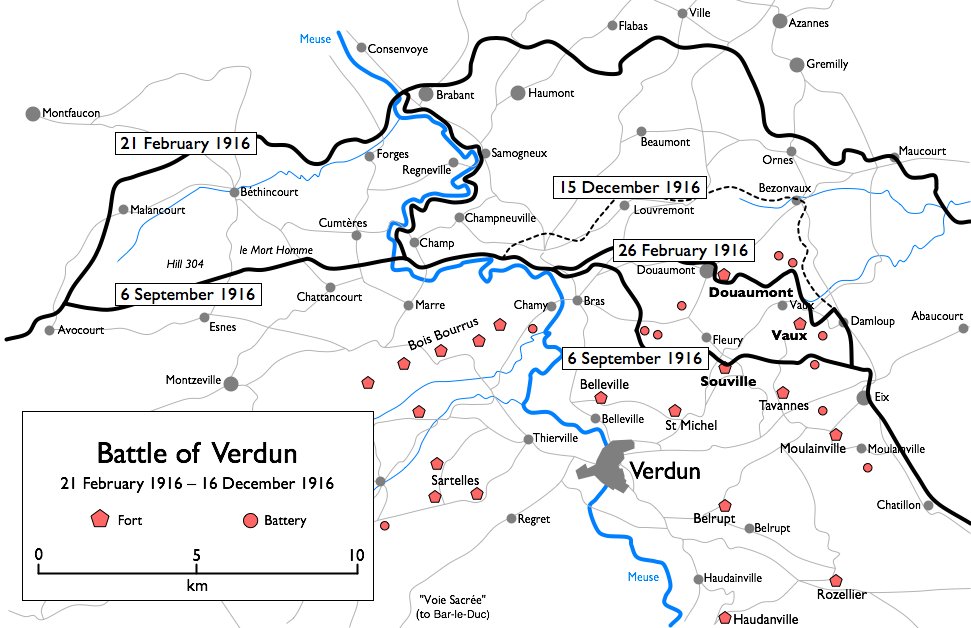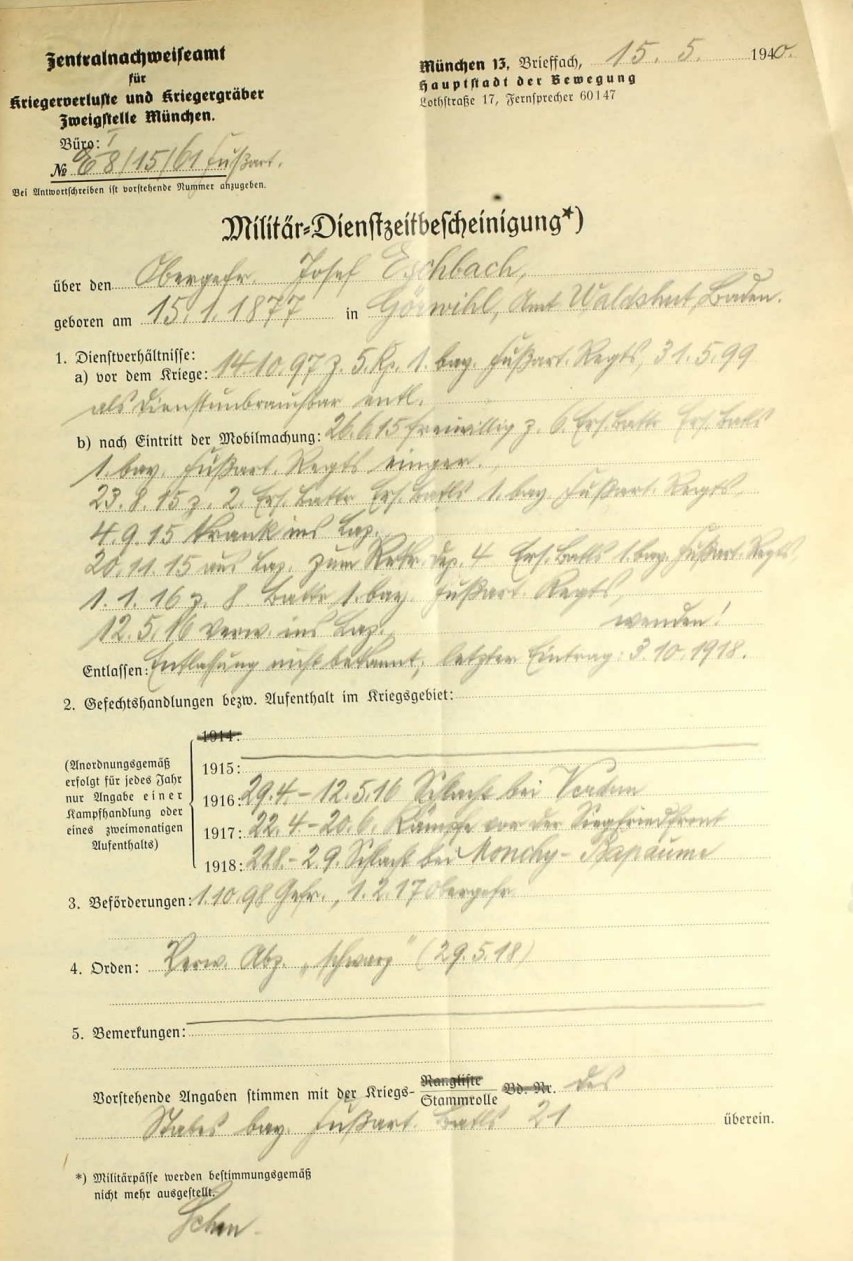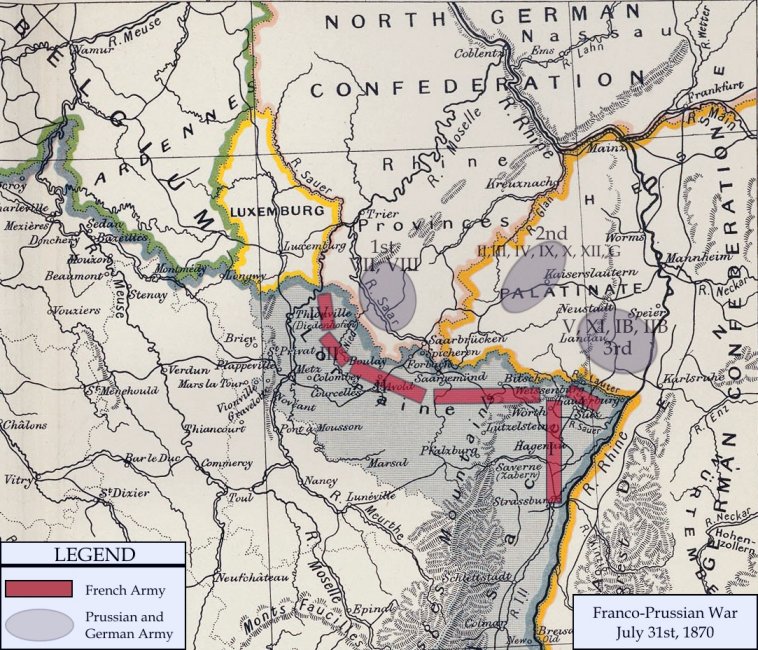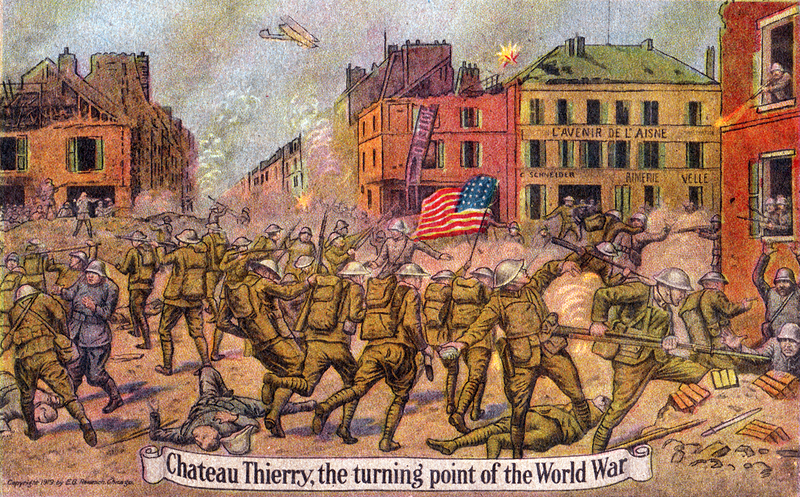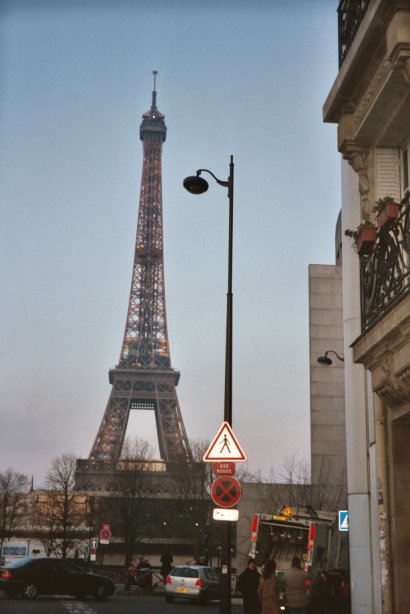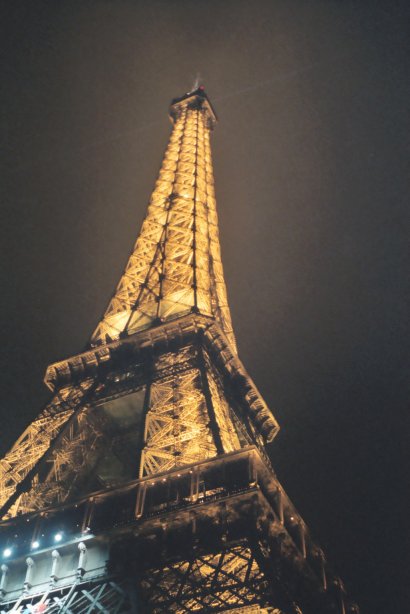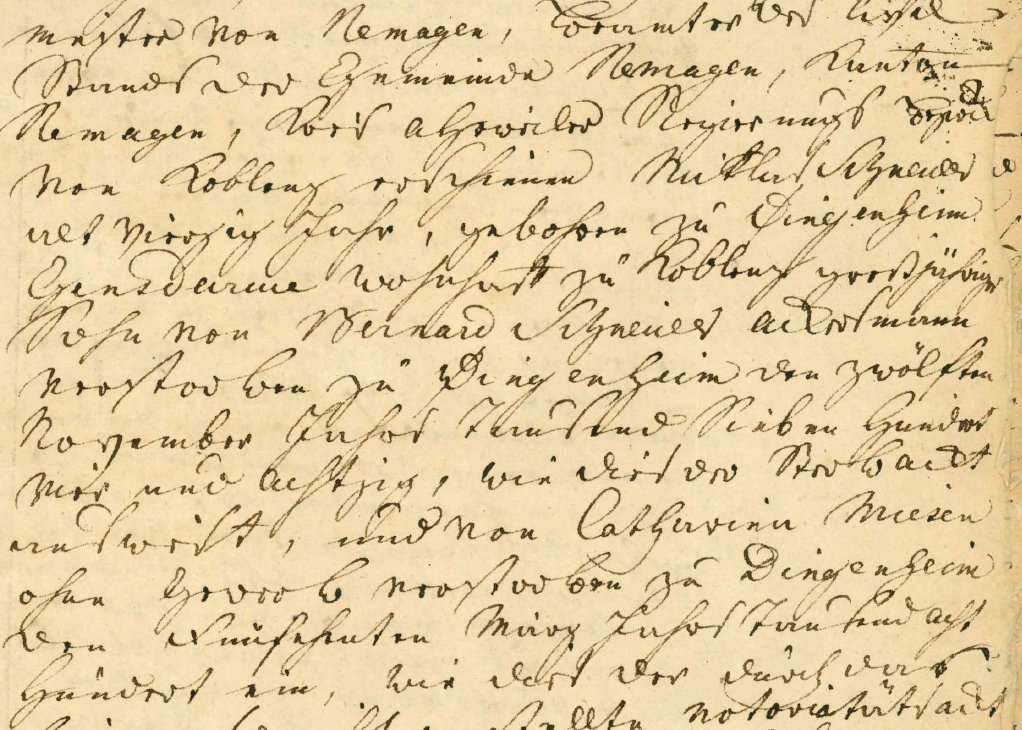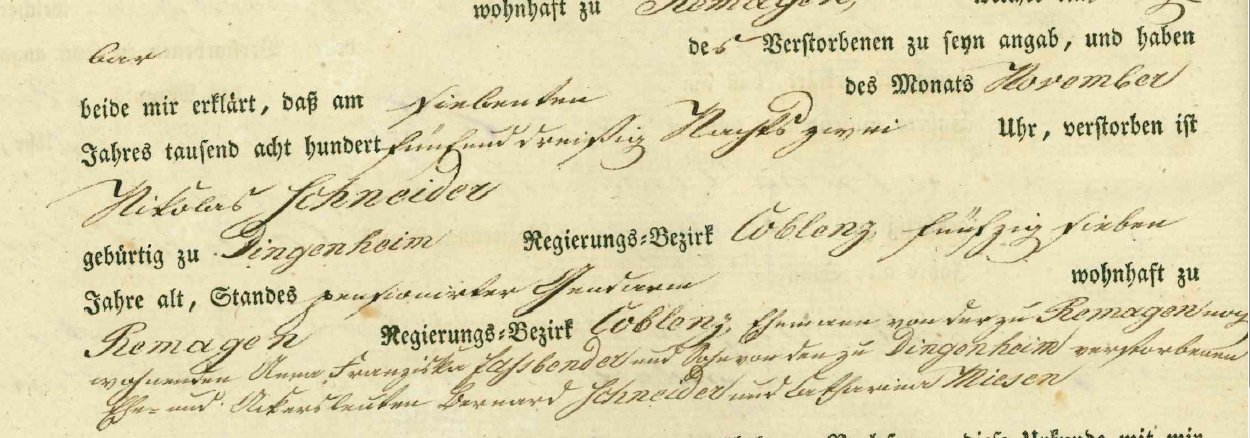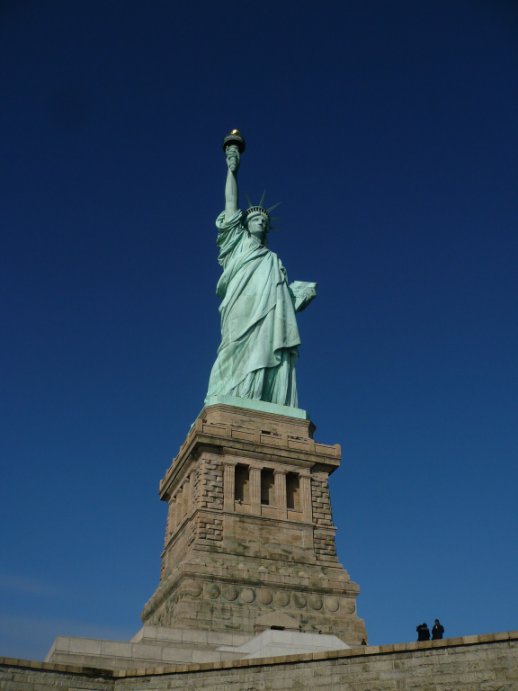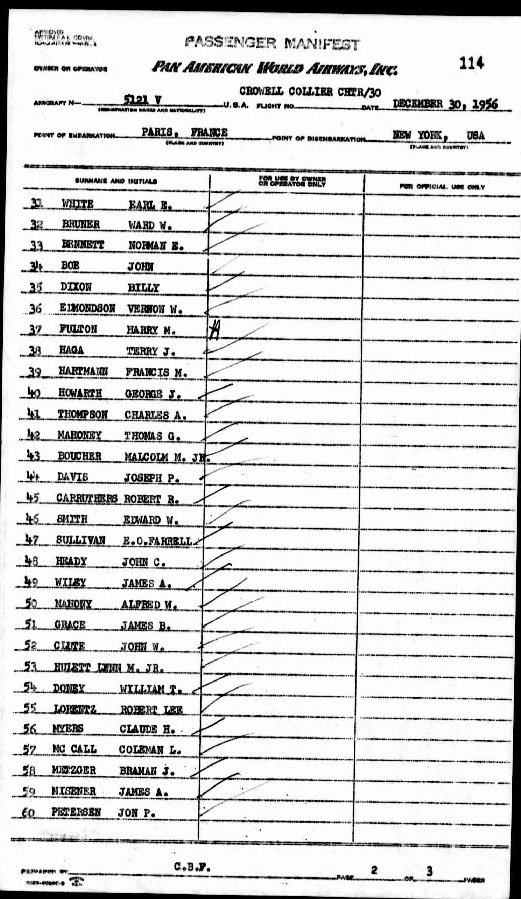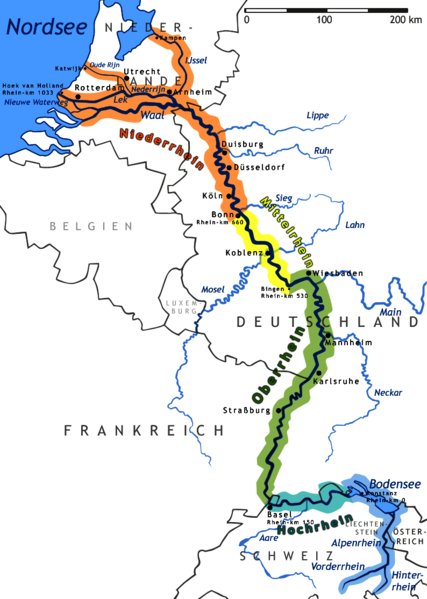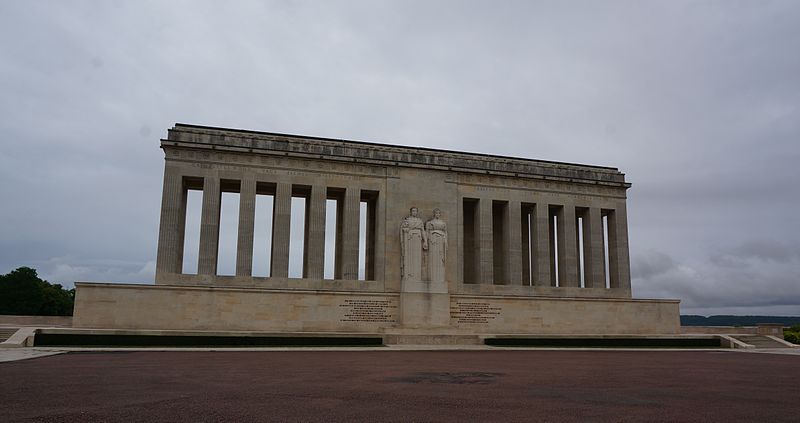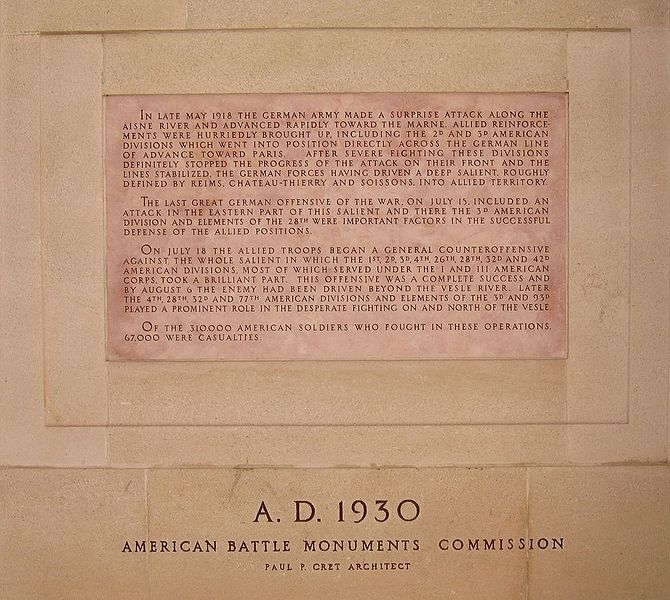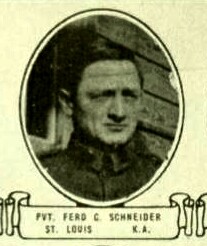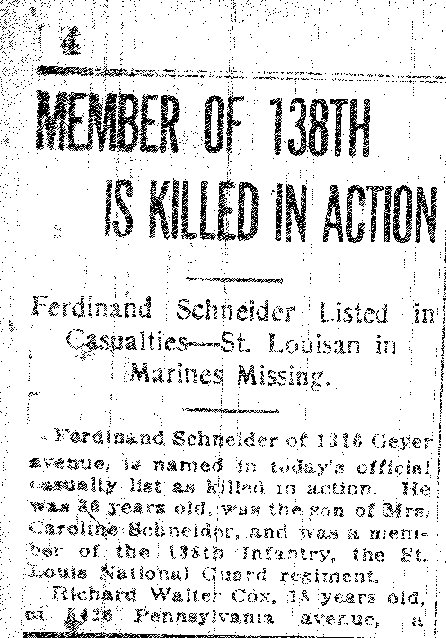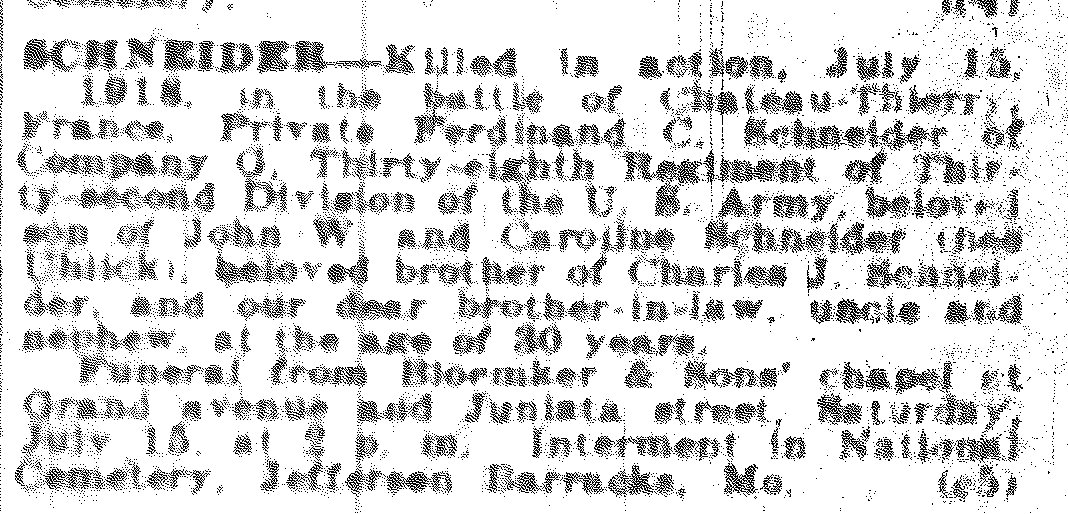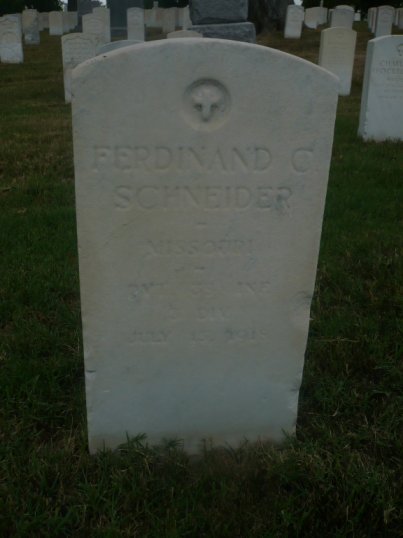Covering genealogy, family history, historical events and places, and anything else related!
Showing posts with label France. Show all posts
Showing posts with label France. Show all posts
Tuesday, January 24, 2017
Tuesday's Tip: Mapire
Mapire (http://mapire.eu/en/) provides access to historical maps of the Habsburg Empire. It contains maps of the First Military Survey (1763-1787), the Second Military Survey (1806-1869), the Third Military Survey (1869-1887), the Military Survey of Hungary (1941), the Austrian Netherlands (1764-1771), and the Hungarian Kingdom (1869-1887). There are cadastral maps from the nineteenth century, and maps of Europe in the eighteenth century, around 1850, and 1850-1890. The site also includes maps from other countries: Italy (nineteenth century), France (eighteenth century), Belgium (eighteenth century), Lower and Upper Alsace (1731), Scotland (nineteenth century), Ordnance Survey of England and Wales (about 1890), Southwest Germany (1797), Germany (nineteenth century), Finland (1918), and Norway (nineteenth century). There are maps of European cities: Vienna (eighteenth century), Budapest (eighteenth-twentieth century), Budapest (1944), London (eighteenth century), Moscow, Paris (1739), and Rome (1829). The Austrian Historic Town Atlas provides information about the history and urban development of sixty-four Austrian towns. It is possible to view the maps synchronized with each other or with today's maps. The maps can also be viewed in 3D. Copies of the maps (reproductions or digital copies) can be purchased. If you have ancestors from these areas, Mapire may be very helpful to you.
Monday, December 5, 2016
Military Monday: Battle of Verdun
The Battle of Verdun was one of the longest battles of World War 1. It was fought between the French and German troops, and lasted for nearly 10 months, from 21 February 1916 to 18 December 1916. More than 3/4 of French troops fought in this battle. There were more than 700,000 casualties, at a rate of about 70,000 per month.
Battle of Verdun, 1916. By Gdr [GFDL (http://www.gnu.org/copyleft/fdl.html) or CC-BY-SA-3.0 (http://creativecommons.org/licenses/by-sa/3.0/)]. Available from Wikimedia Commons.
My first cousin three times removed Josef Eschbach was an Obergefreiter (corporal) in the Bavarian Army, Fußartillerie-Bataillon 21. He participated in the Battle of Verdun.
Fußartillerie-Bataillon 21. 15106-Kriegstammrolle. Ancestry.com. Bavaria, Germany, WWI Personnel Rosters, 1914-1918 [database on-line]. Provo, UT, USA: Ancestry.com Operations, Inc., 2010. Original data: Kriegsstammrollen, 1914-1918. Bavarian State Archives. Department IV, War Archive, Munich.
References
Battle of Verdun
The Battle of Verdun
Battle of Verdun, 1916. By Gdr [GFDL (http://www.gnu.org/copyleft/fdl.html) or CC-BY-SA-3.0 (http://creativecommons.org/licenses/by-sa/3.0/)]. Available from Wikimedia Commons.
My first cousin three times removed Josef Eschbach was an Obergefreiter (corporal) in the Bavarian Army, Fußartillerie-Bataillon 21. He participated in the Battle of Verdun.
Fußartillerie-Bataillon 21. 15106-Kriegstammrolle. Ancestry.com. Bavaria, Germany, WWI Personnel Rosters, 1914-1918 [database on-line]. Provo, UT, USA: Ancestry.com Operations, Inc., 2010. Original data: Kriegsstammrollen, 1914-1918. Bavarian State Archives. Department IV, War Archive, Munich.
References
Battle of Verdun
The Battle of Verdun
Tuesday, July 19, 2016
Franco-Prussian War
Franco-Prussian War map of 1870. Cambridge Modern History Atlas. Edited by A. W. Ward, G. W. Prothero, and Stanley Leathes. London: Cambridge University Press, 1912. Public domain. Available from Wikimedia Commons.
The Franco-Prussian War began on 19 July 1870, when France declared war on Prussia. The German states united against France and raised an army of about 400,000 men.
The French won a skirmish in Saarbrucken on 2 August 1870. The first major battle took place at Wissembourg on 4 August 1870. The Germans were victorious. They also won battles at Spicheren on August 5-6, 1870 and at Wörth on 6 August 1870. On 16 August 1870, the Germans again defeated the French at Mars-la-Tour.
The largest battle of the war took place at Gravelotte on 18 August 1870. The German army lost more than 20,000 troops, and the French army lost more than 12,000 troops.
The French were defeated at the Battle of Sedan on 1 September 1870, and Napoleon III surrendered to the Germans the next day. The Siege of Paris began on 19 September 1870. The Armistice of Versailles ended the fighting on 28 January 1871, and the war ended when the Treaty of Frankfurt was signed on 10 May 1871.
My 2nd-great-grandfather's brother Joseph Gerspacher died in Rastatt, Baden on 3 August 1870. The cause of death was Kriegsfolgen (consequences of war). Rastatt was a main supply base for east of the Rhine River during the Franco-Prussian War.
References
CFB Baden Soellingen Remembered: Crossroad
Faller, Helmut. Familiengeschichte der Gemeinde Görwihl. Bad Säckingen : H. Faller, 2000.
Franco-Prussian War
The Franco Prussian War
The Franco-Prussian War began on 19 July 1870, when France declared war on Prussia. The German states united against France and raised an army of about 400,000 men.
The French won a skirmish in Saarbrucken on 2 August 1870. The first major battle took place at Wissembourg on 4 August 1870. The Germans were victorious. They also won battles at Spicheren on August 5-6, 1870 and at Wörth on 6 August 1870. On 16 August 1870, the Germans again defeated the French at Mars-la-Tour.
The largest battle of the war took place at Gravelotte on 18 August 1870. The German army lost more than 20,000 troops, and the French army lost more than 12,000 troops.
The French were defeated at the Battle of Sedan on 1 September 1870, and Napoleon III surrendered to the Germans the next day. The Siege of Paris began on 19 September 1870. The Armistice of Versailles ended the fighting on 28 January 1871, and the war ended when the Treaty of Frankfurt was signed on 10 May 1871.
My 2nd-great-grandfather's brother Joseph Gerspacher died in Rastatt, Baden on 3 August 1870. The cause of death was Kriegsfolgen (consequences of war). Rastatt was a main supply base for east of the Rhine River during the Franco-Prussian War.
References
CFB Baden Soellingen Remembered: Crossroad
Faller, Helmut. Familiengeschichte der Gemeinde Görwihl. Bad Säckingen : H. Faller, 2000.
Franco-Prussian War
The Franco Prussian War
Friday, July 15, 2016
Battle of Château-Thierry
"Chateau Thierry, the turning point of the World War". Postcard depicting the World War I Battle of Château-Thierry. Postcard published by E.B.Remenson, Chicago, 1919. Public domain. Available from Wikimedia Commons.
My first cousin three times removed Ferdinand Constand Schneider was killed in action on 15 July 1918 at the Battle of Château-Thierry (Aisne, Picardy, France) during World War I. I am posting this image in his memory.
My first cousin three times removed Ferdinand Constand Schneider was killed in action on 15 July 1918 at the Battle of Château-Thierry (Aisne, Picardy, France) during World War I. I am posting this image in his memory.
Thursday, March 31, 2016
Eiffel Tower Opens
The Eiffel Tower was designed to be the entrance arch to the 1889 World's Fair (Exposition Universelle), which was held in Paris, France from 6 May - 31 October 1889. On 31 March 1889, a dedication ceremony was held at the Eiffel Tower. Engineer Gustave Eiffel led members of the press and government officials, including French Prime Minister Pierre Tirard, up the tower. The elevators were not yet working, so they had to walk up 1710 steps. Most of the group did not go all the way to the top; among those that did were structural engineer Émile Nouguier and reporters from the French newspapers Le Figaro and Le Monde illustré. When they reached the top, Eiffel raised the French flag. At the time of the inauguration, the Eiffel Tower was the world's tallest building. It is still the tallest building in Paris.
When I flew back home from Germany in January 2005, I had a one-day layover in Paris. I had the chance to do a little sightseeing, and I visited the Eiffel Tower.
References
Eiffel Tower
Eiffel Tower opens
Exposition Universelle (1889)
History of the Eiffel Tower
When I flew back home from Germany in January 2005, I had a one-day layover in Paris. I had the chance to do a little sightseeing, and I visited the Eiffel Tower.
References
Eiffel Tower
Eiffel Tower opens
Exposition Universelle (1889)
History of the Eiffel Tower
Monday, October 19, 2015
Military Monday: Gendarmerie
A gendarmerie is a paramilitary police force. France's National Gendarmerie (Gendarmerie nationale) was created on 16 February 1791, when the Maréchaussée Royale was renamed. During the French Revolution, the gendarmerie was an auxiliary to France's National Guard. Small brigades of the gendarmerie were spread out over France. The gendarmes (men in the gendarmerie) were usually mounted. They were housed in barracks. The brigades formed companies, which covered departments. The companies formed squadrons, and squadrons formed legions.
As Napoleon conquered areas of Europe, the gendarmerie spread. It was introduced in the Rhineland region of Germany in 1798. By 1809, there were 15,500 men in the gendarmerie; 527 of them were in the Rhineland. The 25th gendarmerie legion consisted of four departments in the Rhineland, which were located in Köln (Cologne), Koblenz, Mainz, and Trier. The departments were patrolled by two squadrons. The gendarmes searched for draft dodgers and deserters. Mayors, prefects, and sub-prefects could call on them if they anticipated disorder in their communities. Approximately one quarter of the men were local; the others were French, but were supposed to know German.
On 20 December 1808, the French troops left the Rhineland. However, the gendarmerie continued. The remaining gendarmes served the Grand Duchy of Hesse-Darmstadt.
My 4th-great-grandfather Nikolaus Schneider was a gendarme. He was born about 1777 in Düngenheim, Cochem-Zell, Rheinland-Pfalz (Rhineland-Palatinate), Germany. When he married in 1818, he was a gendarme stationed in Koblenz.
Excerpt from the marriage record of Nikolaus Schneider and Anna Maria Fasbender, 6 January 1818. Remagen, Ahrweiler, Rheinland-Pfalz. Stadtarchiv Remagen.
Excerpt from the death record of Nikolaus Schneider, 7 November 1835. Remagen, Ahrweiler, Rheinland-Pfalz. Stadtarchiv Remagen. His profession was "Standes preußischer Gendarm" (former Prussian gendarme).
Koblenz (Regierungsbezirk). Amtsblatt der Preußischen Regierung zu Koblenz: Jahrgang 1817. Section on security and police from the official journal of the Prussian government to Koblenz, 1817. Page 95. Available from Google Books.
References
Broers, Michael. The Napoleonic Police and their Legacy
Gendarmerie
National Gendarmerie
Polizei Rheinland-Pfalz - Geschichte der Polizei
Rowe, Michael. From Reich to State: The Rhineland in the Revolutionary Age, 1780-1830. New York: Cambridge University Press, 2003.
As Napoleon conquered areas of Europe, the gendarmerie spread. It was introduced in the Rhineland region of Germany in 1798. By 1809, there were 15,500 men in the gendarmerie; 527 of them were in the Rhineland. The 25th gendarmerie legion consisted of four departments in the Rhineland, which were located in Köln (Cologne), Koblenz, Mainz, and Trier. The departments were patrolled by two squadrons. The gendarmes searched for draft dodgers and deserters. Mayors, prefects, and sub-prefects could call on them if they anticipated disorder in their communities. Approximately one quarter of the men were local; the others were French, but were supposed to know German.
On 20 December 1808, the French troops left the Rhineland. However, the gendarmerie continued. The remaining gendarmes served the Grand Duchy of Hesse-Darmstadt.
My 4th-great-grandfather Nikolaus Schneider was a gendarme. He was born about 1777 in Düngenheim, Cochem-Zell, Rheinland-Pfalz (Rhineland-Palatinate), Germany. When he married in 1818, he was a gendarme stationed in Koblenz.
Excerpt from the marriage record of Nikolaus Schneider and Anna Maria Fasbender, 6 January 1818. Remagen, Ahrweiler, Rheinland-Pfalz. Stadtarchiv Remagen.
Excerpt from the death record of Nikolaus Schneider, 7 November 1835. Remagen, Ahrweiler, Rheinland-Pfalz. Stadtarchiv Remagen. His profession was "Standes preußischer Gendarm" (former Prussian gendarme).
Koblenz (Regierungsbezirk). Amtsblatt der Preußischen Regierung zu Koblenz: Jahrgang 1817. Section on security and police from the official journal of the Prussian government to Koblenz, 1817. Page 95. Available from Google Books.
References
Broers, Michael. The Napoleonic Police and their Legacy
Gendarmerie
National Gendarmerie
Polizei Rheinland-Pfalz - Geschichte der Polizei
Rowe, Michael. From Reich to State: The Rhineland in the Revolutionary Age, 1780-1830. New York: Cambridge University Press, 2003.
Labels:
France,
Germany,
Koblenz,
Military Monday,
Schneider
Friday, July 24, 2015
Founding of Detroit
On 24 July 1701, the city of Detroit was founded. Antoine Laumet de la Mothe, sieur de Cadillac, was given $1500 livre (about $300) by Louis XIV of France to help establish a fort and trading post on the Detroit River. The French wanted to keep the British from moving west of New England, to control the traffic on the Detroit River, and to monopolize the fur trade.
Cadillac left from Montreal with a party of 100 Frenchmen, including Captain Alphonse de Tonty, First Sergeant Jacob de Marsac, Robert Chevalier de Beauchêne, Father Nicholas Bernardin Constantin Delhalle (a Recollet priest), and Father François Vaillant de Gueslis (a Jesuit priest). About 100 Indians also traveled with them. They traveled up the Ottawa River on canoes to Lake Nipissing, down the French River and the Pickerel River to the Georgian Bay, south to Lake Huron, down the St. Clair River and through Lake St. Clair, until they reached the Detroit River. They set up camp at Grosse Ile on 23 July 1701. The next day, they traveled north and began building a settlement on the narrowest part of the river, overlooking the strait between Lake Erie and Lake St Clair. The settlement was named Fort Pontchartrain du Détroit, after Louis Phélypeaux, comte de Pontchartrain or his son Jérôme Phélypeaux, comte de Pontchartrain. Détroit is the French word for "strait."
Ste. Anne de Détroit Catholic Church was the first building to be completed in the settlement. The second building to be completed was the stockade.
References
Antoine de la Mothe Cadillac
Early Detroit: 1701-1760
Fort Detroit
The Founding of Detroit
French Detroit 1701-1760
People of Detroit: Antoine de la Mothe, Sieur de Cadillac
Ste. Anne de Detroit Catholic Church
Tuesday, October 28, 2014
Statue of Liberty Dedicated
On 28 October 1886, the Statue of Liberty was dedicated. The statue was designed by French sculptor Frédéric Auguste Bartholdi. It was a gift of friendship to the United States from the people of France. In 1865, French law professor and politician Édouard René de Laboulaye stated that any monument to American independence should be a joint project of the United States and France, and in1875, proposed that the French finance the statue and that the United States build the pedestal and provide the site. Bartholdi was inspired by Laboulaye's words. The torch was the first part constructed; it was completed in 1876.
The statue represents Libertas, the Roman goddess of freedom. The date of the Declaration of Independence is inscribed on the tablet held by the statue.
A parade was held in New York City the morning of the dedication. A nautical parade was held at 12:45 PM, and the dedication followed. President Grover Cleveland presided over the dedication. French diplomat Ferdinand de Lesseps and Senator William M. Evarts, and Chauncey Depew also spoke at the dedication.
Liberty Island is in New York territory, but is on the New Jersey side of the state line. The statue has welcomed millions of immigrants to the United States since 1886.
References
Tuesday, September 9, 2014
Travel Tuesday: John Boe's Business Trip to Paris, 1956
In 1956, my maternal grandfather John Boe traveled to Paris, France with P. F. Collier and Son. He was Vice President of the company at the time. He and John G. Ryan, President of P. F. Collier, presented a hand-tooled leather set of the anniversary edition of Collier's Encyclopedia to M. Julien Caen, the administrator general of the Bibliothèque nationale de France. He also met Guy Mollet, Prime Minister of France.
He returned to New York on 30 December 1956 on a Crowell Collier charter flight on Pan American World Airways.
Ancestry.com. New York, Passenger Lists, 1820-1957 [database on-line]. Provo, UT, USA: Ancestry.com Operations, Inc., 2010. Year: 1956; Arrival: New York, New York; Microfilm Serial: T715, 1897-1957; Microfilm Roll: Roll 8823; Line: 4; Page Number: 114.
He returned to New York on 30 December 1956 on a Crowell Collier charter flight on Pan American World Airways.
Ancestry.com. New York, Passenger Lists, 1820-1957 [database on-line]. Provo, UT, USA: Ancestry.com Operations, Inc., 2010. Year: 1956; Arrival: New York, New York; Microfilm Serial: T715, 1897-1957; Microfilm Roll: Roll 8823; Line: 4; Page Number: 114.
Monday, August 11, 2014
Mappy Monday: Rhine River (Fluss Rhein)
Rhein-Karte. Map by Daniel Ullrich (Threedots) [CC-BY-SA-3.0 (http://creativecommons.org/licenses/by-sa/3.0)]. Available from Wikimedia Commons.
This map shows the Rhine River (Fluss Rhein). The Vorderrhein and Hinterrhein come together in Switzerland. The Hochrhein (High Rhine) flows to the west from Lake Constance to Basel, Switzerland. The Oberrhein (Upper Rhine) flows from Basel to Bingen, Germany. This section of the Rhine flows through Switzerland, France (Alsace), and the German states of Baden-Württemburg, Rhineland-Palatinate (Rheinland-Pfalz), and Hesse. The Mittelrhein (Middle Rhine) flows from Bingen to Bonn. The Niederrhein (Lower Rhine) begins in Bonn. After it enters the Netherlands, it splits into branches, including Waal, Merwede, Nieuwe Maas, and Nederrijn, and flows out to the North Sea.
My German ancestors lived by the Rhine River. My Schneider ancestors were from Erpel and Remagen. My Nagel ancestors lived in Bonn for a while. They were originally from Hürth (Hermülheim, Kendenich), which is near the Rhine. My Gersbacher/Gerspacher ancestors were from the Hotzenwald region in Baden, in Görwihl and Niederwihl (now part of Görwihl). My Dreier ancestors were from Niederwihl. Görwihl is at the edge of the river Alb, which is a tributary of the Rhine.
This map shows the Rhine River (Fluss Rhein). The Vorderrhein and Hinterrhein come together in Switzerland. The Hochrhein (High Rhine) flows to the west from Lake Constance to Basel, Switzerland. The Oberrhein (Upper Rhine) flows from Basel to Bingen, Germany. This section of the Rhine flows through Switzerland, France (Alsace), and the German states of Baden-Württemburg, Rhineland-Palatinate (Rheinland-Pfalz), and Hesse. The Mittelrhein (Middle Rhine) flows from Bingen to Bonn. The Niederrhein (Lower Rhine) begins in Bonn. After it enters the Netherlands, it splits into branches, including Waal, Merwede, Nieuwe Maas, and Nederrijn, and flows out to the North Sea.
My German ancestors lived by the Rhine River. My Schneider ancestors were from Erpel and Remagen. My Nagel ancestors lived in Bonn for a while. They were originally from Hürth (Hermülheim, Kendenich), which is near the Rhine. My Gersbacher/Gerspacher ancestors were from the Hotzenwald region in Baden, in Görwihl and Niederwihl (now part of Görwihl). My Dreier ancestors were from Niederwihl. Görwihl is at the edge of the river Alb, which is a tributary of the Rhine.
Labels:
Baden,
Dreier,
Erpel,
France,
Germany,
Gersbacher,
Gerspacher,
Görwihl,
Hermülheim,
Hürth,
Kendenich,
Mappy Monday,
Nagel,
Netherlands,
Niederwihl,
Remagen,
Rhine,
Schneider,
Switzerland
Monday, July 14, 2014
Military Monday: Château-Thierry American Monument
Mémorial franco-américain Marne 09617. Photo by GGaritan (Gérald Garitan). Licensed under the Creative Commons Attribution-Share Alike 3.0 Unported license. Image available from Wikimedia Commons.
The Château-Thierry American Monument was erected to commemorate the achievements and sacrifices of American and French troops during the Aisne-Marne and Oise-Aisne offensives. The monument, on Hill 204 overlooking Château-Thierry and the Marne River Valley, was designed by Paul Philippe Cret. Alfred Alphonse Bottiau sculpted the two figures on the west facade which represent the United States and France. General John J. Pershing was present for the inauguration of the monument on 9 October 1937.
Commemorative text on the American Monument of Château-Thierry. Photo by Zeugma fr (Antoine Fleury-Gobert). Licensed under the Creative Commons Attribution-Share Alike 3.0 Unported license. Image available from Wikimedia Commons.
My great-grandfather's first cousin Ferdinand Constand Schneider was killed during the Aisne-Marne campaign.
References and Additional Resources
Chateau-Thierry American Monument
Chateau-Thierry Monument (American Battle Monuments Commission)
Monuments of Château-Thierry Area (American Remembrance)
An Hour from Paris: Chateau Thierry’s American WWI Sights (photolog)
The Château-Thierry American Monument was erected to commemorate the achievements and sacrifices of American and French troops during the Aisne-Marne and Oise-Aisne offensives. The monument, on Hill 204 overlooking Château-Thierry and the Marne River Valley, was designed by Paul Philippe Cret. Alfred Alphonse Bottiau sculpted the two figures on the west facade which represent the United States and France. General John J. Pershing was present for the inauguration of the monument on 9 October 1937.
Commemorative text on the American Monument of Château-Thierry. Photo by Zeugma fr (Antoine Fleury-Gobert). Licensed under the Creative Commons Attribution-Share Alike 3.0 Unported license. Image available from Wikimedia Commons.
My great-grandfather's first cousin Ferdinand Constand Schneider was killed during the Aisne-Marne campaign.
References and Additional Resources
Chateau-Thierry American Monument
Chateau-Thierry Monument (American Battle Monuments Commission)
Monuments of Château-Thierry Area (American Remembrance)
An Hour from Paris: Chateau Thierry’s American WWI Sights (photolog)
Monday, June 23, 2014
Military Monday: 4th Australian Field Ambulance, World War I
Group portrait of the 4th Australian Field Ambulance, Steenwerck, France, 11 March 1918. Available from the Australian War Memorial.
My first cousin 3 times removed George Arthur Troedson was the son of Ola Peter Troedson, brother of my great-great-grandfather Andreas Troedsson. George was a private in the 4th Australian Field Ambulance. In this photo, he is third from right in the fourth row.
My first cousin 3 times removed George Arthur Troedson was the son of Ola Peter Troedson, brother of my great-great-grandfather Andreas Troedsson. George was a private in the 4th Australian Field Ambulance. In this photo, he is third from right in the fourth row.
Monday, May 26, 2014
Military Monday and 52 Ancestors: #20 Ferdinand Constand Schneider
Photo from page 165, Missouri - Soldiers of the Great War, compiled by W. M. Haulsee, F. G. Howe, and A. C. Doyle. Washington, DC: Soldiers Record Publishing Association, 1920. Available online at http://www.usgwarchives.net/mo/wwi/missourisoldies-greatwar.htm.
Ferdinand Constand Schneider was the son of my great-great-grandfather's brother John William (Johann Wilhelm) Schneider and Caroline Uhlik. He was born in St. Louis, Missouri on 4 November 1887. He and his older brother Carl Joseph (named after his uncle, my great-great-grandfather) were the first generation born in the United States; their father was born in Erpel, Neuwied, Rheinland, Germany and their mother was born in Bohemia.
On 5 June 1917, Ferdinand registered for the World War I draft. At that time, he lived at 1316 Geyer Ave. in St. Louis and was a foreman at St. Louis Cordage Works, Menard & Soulard. His draft card noted that one of his fingers was cut at the first joint. In the 1909 St. Louis city directory he had been listed as a cutter; perhaps he had an accident at work.
Details of Ferdinand's service are provided in World War I Biography and Service Records: Persons Who Enlisted in St. Louis City and County. Addenda: Those Who Died in Service (Missouri Historical Society, 1995). Ferdinand joined the United States Army on September 19, 1917 and was a private in Company I, 354th Infantry. On March 16, 1918 he was transferred to Company G, 38th Infantry 3rd Division, where he was a private and machine gunner. A newspaper clipping in the Missouri Historical Society publication stated that "his last letter derides the Germans for their inaccuracy in shooting. He said that they merely pull the trigger and trust to luck to have the bullets take effect."
Unfortunately the bullets took effect on 15 July 1918 at the Battle of Château-Thierry (Aisne, Picardy, France), when Ferdinand was killed by shell fire. The son of a German immigrant had died fighting against the Germans. His body was transported back to the United States, and he was interred in Jefferson Barracks National Cemetery in Oakville, St. Louis County, Missouri on the fourth anniversary of his death.
St. Louis Post-Dispatch, 26 September 1918, p. 4
St. Louis Post-Dispatch, 12 July 1922. p. 19
Subscribe to:
Posts (Atom)

